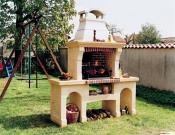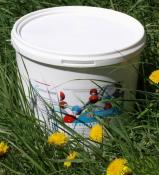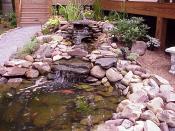Search
Login
Recommended
We choose a soldering iron for welding polypropylene, how to choose the right one, useful tips
Polypropylene pipes successfully replace metal in many communications. They are used to design various engineering systems. They are successfully used in all climatic zones of the country in water supply, heating, and sewage systems. In this case, the reliability of the system will depend on the reliability of the welded or welded joints of the polypropylene pipe. Choosing the right equipment for the welding of polypropylene is the key to reliable operation of the entire system.
Table of contents
- Why polypropylene
- Classification of polypropylene pipes
- Choosing a soldering iron for polypropylene video video
- Which manufacturer to choose?
Why polypropylene
If you need to choose the material for the installation of the heating, water supply and sewage systems, we recommend using pipes made of polypropylene. The material appeared more than 15 years ago and confidently occupied its niche in the market, not giving way to other materials. Among the main advantages of such a pipe are:
- light weight;
- ease of installation;
- a large assortment;
- lack of electrical conductivity;
- low thermal conductivity (heat savings during transportation of hot water up to 20% compared with metal);
- does not require painting or additional coating;
- not exposed to aggressive chemical compounds (acids, alkalis,
- solvents);
- 50 year material warranty.
When using propylene pipes in a heating system, one significant drawback is the large linear expansion coefficient. It is 1.5cm per 1 meter. During installation, nozzles may appear that do not look aesthetically pleasing. To improve the characteristics of the pipe and reduce the coefficient of linear expansion, reinforcement is used:
- aluminum;

- fiberglass.

Reinforcement with aluminum foil can be performed on the outer or inner wall of the pipe. Fiberglass reinforcement is carried out in the middle of the pipe wall. In reinforced pipes, the linear expansion coefficient decreases by a factor of ten and amounts to 1-2 mm / m, which does not affect the overall appearance of the system. In a reinforced pipe, the coolant temperature can reach 95C. Pipe reinforcement also increases the service life of both the pipe and the system as a whole.
Classification of polypropylene pipes
Polypropylene pipes are divided into 4 types:
- PN 10 thin-walled pipe, which is used for cold water supply, with a maximum coolant temperature of up to + 40-45С;
- PN16 pipe is used for the installation of cold water supply, as well as the installation of underfloor heating, the temperature of the coolant is up to + 60C. It is not in great demand; it is not often represented on the market.
- PN 20 is the most common pipe on the market with an optimal price / quality ratio. Used for installation of cold water supply and heating systems. Heat carrier temperature up to + 90С. It is used for the installation of sewer systems. Manufacturers make a pipe reinforced and not reinforced.
- PN 25 is mainly used for heating systems. Always reinforced. Heat carrier temperature up to + 95С.
Different manufacturers label their products according to a single standard. At the same time, the product range is very large. They are similar in their properties, but not identical. There are about 200 types of this material. Let's consider some of them:
- PP polypropylene;
- PPHO, PP homopolymer polypropylene homopolymer;
- HIPP highly isotactic polypropylene homopolymer;
- PPS polypropylene homopolymer, flame retardant polypropylene;
- PP-X, PP-XMOD crosslinked polypropylene;
- PPCP, PP / Co, PP block copolymer, PP impact copolymer polypropylene block copolymer, block copolymer of propylene and ethylene;
- PPH, PPU, PPR, PPM block copolymer of propylene and ethylene with a correspondingly very high / high / medium / low polyethylene content;
- PP random copolymer random copolymer of propylene and ethylene;
- PP-EPDM, PP / EP a mixture of polypropylene and a triple copolymer of ethylene, propylene and diene;
- EPP expandable polypropylene;
- EMPP rubber modified polypropylene;
- mPP metallocene polypropylene.
Homopropylene is used in cold water supply systems, a pipe made of block copolymer can be used in underfloor heating systems, the material is also used for the manufacture of fittings. PPS pipe is used to install high-temperature (up to + 95 ° C) heating systems.
Polypropylene pipes are available in several colors: white, gray, green and black. Black pipes are used for the installation of sewer systems. Its properties do not depend on the color of the polypropylene pipe.
Choosing a soldering iron for polypropylene
A machine for welding polypropylene pipes, a common soldering iron, is the first thing you need for welding with polypropylene. Technology for welding polypropylene pipes very simple and, one might say, even primitive, it all depends on the quality of the equipment and a little on the skill of the master.
For pipes of larger diameter, a mechanical apparatus is used that allows precise alignment of the pipe and ensures perfect alignment.

The equipment includes:
- frame;
- instrument unit;
- hydraulic unit;
- captures (2 pieces);
- inserts;
- electric trimmer;
- heating element.
The pipe is fixed and centered in the grippers using liners. Using an electric trimmer, align the ends of the pipe. The heater is equipped with temperature control and adjustment sensors.
For welding pipes of small diameter (up to 120mm) use a small hand tool, which everyone can handle the work on. With it, you can independently mount a water supply or heating system for an apartment or a small private cottage.

The main part is a heating plate, to which the nozzles are attached. Nozzles come in two types:
- mandrels are those on which the fitting is worn;
- sleeve those on which the pipe is put on.
Each pipe diameter has its own pair of nozzles. A teflon coating is applied to the nozzle metal to reduce the adhesion of the pipe material to the heating element. Nozzles, to facilitate the dressing of the elements, have a slight taper up to 0.5. In this case, the pipe diameter is larger than the nominally declared diameter by 0.2-0.3 mm. The diameter of the fitting is less than 0.2-0.3 mm declared. For example, for a pipe with a diameter of 25 mm, its external diameter will be 25.2 mm. Accordingly, the diameter of the fitting is 24.8 mm.
Such manipulation is done so that the pipe and fitting cannot be combined without preheating. When heating and putting on the pipe and fitting on the soldering iron nozzles, the upper layer was melted and squeezed out, forming a bead of burrs.
For welding sheet polypropylene using welding extruders.

They are equipped with their own interchangeable elements for work:
- preheating nozzles;
- welding shoe.
When welding sheet polypropylene, it is recommended that the weld bar be selected from the same material as the sheets themselves.
Which manufacturer to choose?
Most of the global equipment manufacturers are represented in our market. Starting from nameless Chinese and ending with branded European and American manufacturers. It all depends on the thickness of your wallet and the frequency of use of the tool. If you want to work professionally and earn money by installing water and heating systems, then you should think about buying good equipment from: KRAFTMAN (Great Britain), EUROTEC (Germany), FALON TECH (Germany).
If you decide to independently change the pipes in your apartment or in the house yourself, then cheaper equipment will suit you, for example: Dytron (Czech Republic), CANDAN (Turkey). If you want to save more, you can buy Chinese. In this case, a lottery may work for many years, or it may not work at all. Although the quality of Chinese goods is improving, there is always a chance to get on a low-quality product.
Soldering irons ditron and kandan received a lot of positive reviews. They showed reliable operation and long operation lines. Optimum ratio price quality. The choice is yours.





